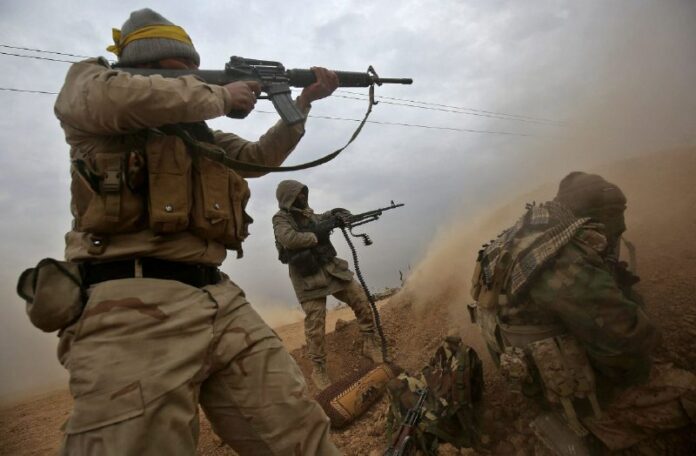📖 Rule by Militia
🔶️ Militias are often taken as a sign of weak or absent government, the result of renegade actors operating in the wake of state collapse. Such a narrative could be told through a roll call of fallen dictators—from Mohamed Siad Barre in Somalia through to Saddam Hussein in Iraq and Muammar Gaddafi in Libya—whose removal seemed to result in the death of the state and the emergence of militias that pick over its carcass. But these lapsarian lessons about the evils that befall a society after state collapse occlude more than they reveal. The reality is that many militias active around the globe today were created by states. In the aftermath of the economic crises of the 1980s, governments wracked by debt found militias an efficient way of managing restive populations.
🔶️ For much of European history, militias and other nonstate military actors played a part in state policy. Feudal military mobilization, for example, largely relied on assembling coalitions of aristocratic houses and their levies. When this system broke down, it was replaced by a marketplace for mercenaries in which access to force depended on capital reserves. By the eighteenth century, half the Prussian army was comprised of hired troops, and all the European states except Switzerland relied on foreign fighters. These mercenaries were sometimes drawn from private armies. Just as often, European rulers would hire out their own forces to other sovereigns.
🔶️ The state itself was just one of many forms of military power that vied with each other, none of them necessarily more legitimate than any other. If the state won, it was because, as Charles Tilly puts it in his famous article on state- and war-making, “small groups of power-hungry men fought off numerous rivals and great popular resistance in the pursuit of their own ends, and inadvertently promoted the formation of national states.” In this telling, Weber’s legitimation of state violence was the winner’s prize bestowed on the most distinguished group of bandits. The state became the form that seized the mode of predation.
🔶️ The second key characteristic of the contemporary militia is thus that it exists—much like the mercantile companies of seventeenth- and eighteenth-century Europe—as a military force, political organ, and business all at the same time. Their control of real estate, banking, and commercial services ensures their autonomy from the state. It also occludes the role of global commodity markets, which have obscurity built into them, in enabling militia economies. A U.S. Government Accountability Office review of conflict minerals (which include tin, tungsten, tantalum, and gold) from 2022 determined that half the companies surveyed couldn’t determine where the minerals they used came from, at all.
🔶️ Within the nation-state system, as Amitav Ghosh once suggested, there are increasingly two classes of country. In one class, borders are believed in, the state promises to offer at least a vestige of security, and governments have the capacity to act relatively autonomously from the ethnic and economic forces that constitute them. In the other class of country, the state is a fiction insisted upon by the international community. State-building efforts in these countries have only led to more power being vested in rentier elites, dependent on resources from elsewhere, who have fractured the nations over which they rule.
🔶️ Changing this dynamic is not easy. What is certain is that the liberal dream of a Weberian state will offer no solutions; the theater of state-building has clearly run its course. Any alternative would need to attend to the supply chains and international commodity markets that enable rule by militia. Rather than propping up fictional governments, the international community could focus on the real motor of militia membership: a growing surplus of young women and men thrown off by the global economy which cannot be absorbed by the countries they live in unless massive economic transformations take place at a planetary scale.
📎 Boston Review
Rule by Militia
Militias are often perceived as a sign of weak or absent government, a symptom of rogue elements operating in the aftermath of state collapse. The narrative often told is one of fallen dictators leading to the emergence of militias that take over the remnants of a failed state. However, this simplistic view fails to capture the complexity of the situation. The reality is that many militias around the world today were actually created and supported by states themselves.
In the aftermath of the economic crises of the 1980s, governments burdened by debt saw militias as a cost-effective way to manage dissent and control populations. This tactic proved to be an efficient means of exerting power and maintaining order in turbulent times. Throughout history, non-state military actors have played a role in state policy. Feudal military mobilization, for example, relied on coalitions of aristocratic houses and their levies. When this system collapsed, a marketplace for mercenaries emerged, with access to force depending on capital reserves.
In the seventeenth and eighteenth centuries, European states relied heavily on mercenaries and private armies to bolster their military strength. The state itself was just one form of military power among many, none necessarily more legitimate than the other. The emergence of the modern nation-state was a result of power struggles and conflicts, with the state ultimately becoming the dominant form of governance.
Today, militias exist as a multifaceted entity, combining elements of military force, political organization, and business. Their control over various sectors, such as real estate, banking, and commercial services, grants them autonomy from the state. This autonomy is further fueled by global commodity markets, which often operate in secrecy, enabling militia economies to thrive.
Within the current nation-state system, there are clear distinctions between countries that uphold the idea of borders and state sovereignty, and those that rely on international support to maintain their governance structures. State-building efforts in the latter category often result in further fragmentation and power struggles among rentier elites.
Addressing this complex issue requires a shift in perspective. The liberal ideal of a Weberian state is no longer sufficient in addressing the challenges posed by rule by militia. Rather than propping up fictional governments, the international community must address the root causes of militia membership: economic disenfranchisement and lack of opportunities for young people. Only through massive economic transformations on a global scale can the cycle of conflict and militia rule be broken.
In conclusion, the phenomenon of rule by militia is a complex issue that cannot be solved through conventional means. It requires a deep understanding of the historical context, economic factors, and power dynamics at play. By acknowledging the role of militias in modern governance and addressing the root causes of their existence, we can move towards a more stable and peaceful future for all nations.

